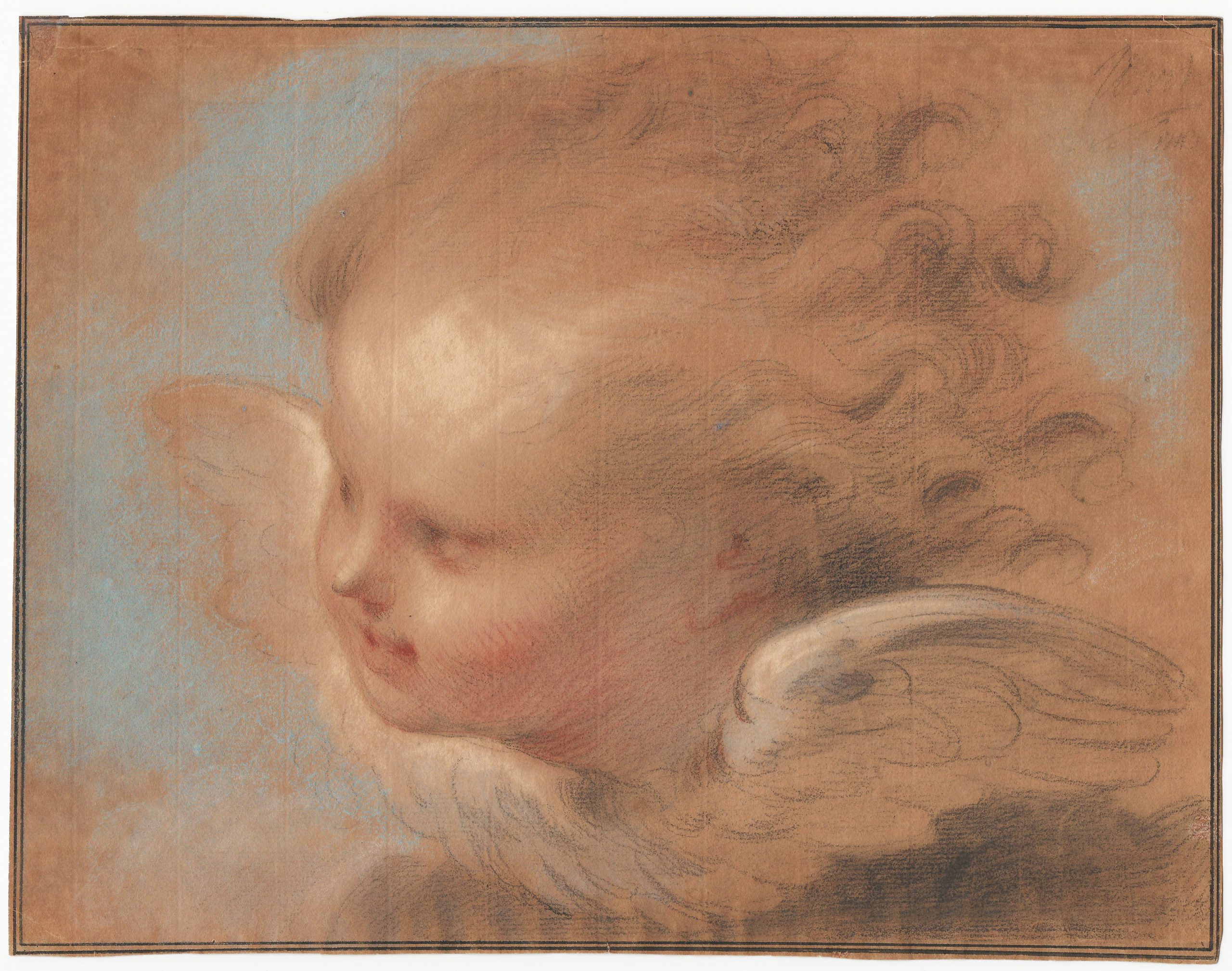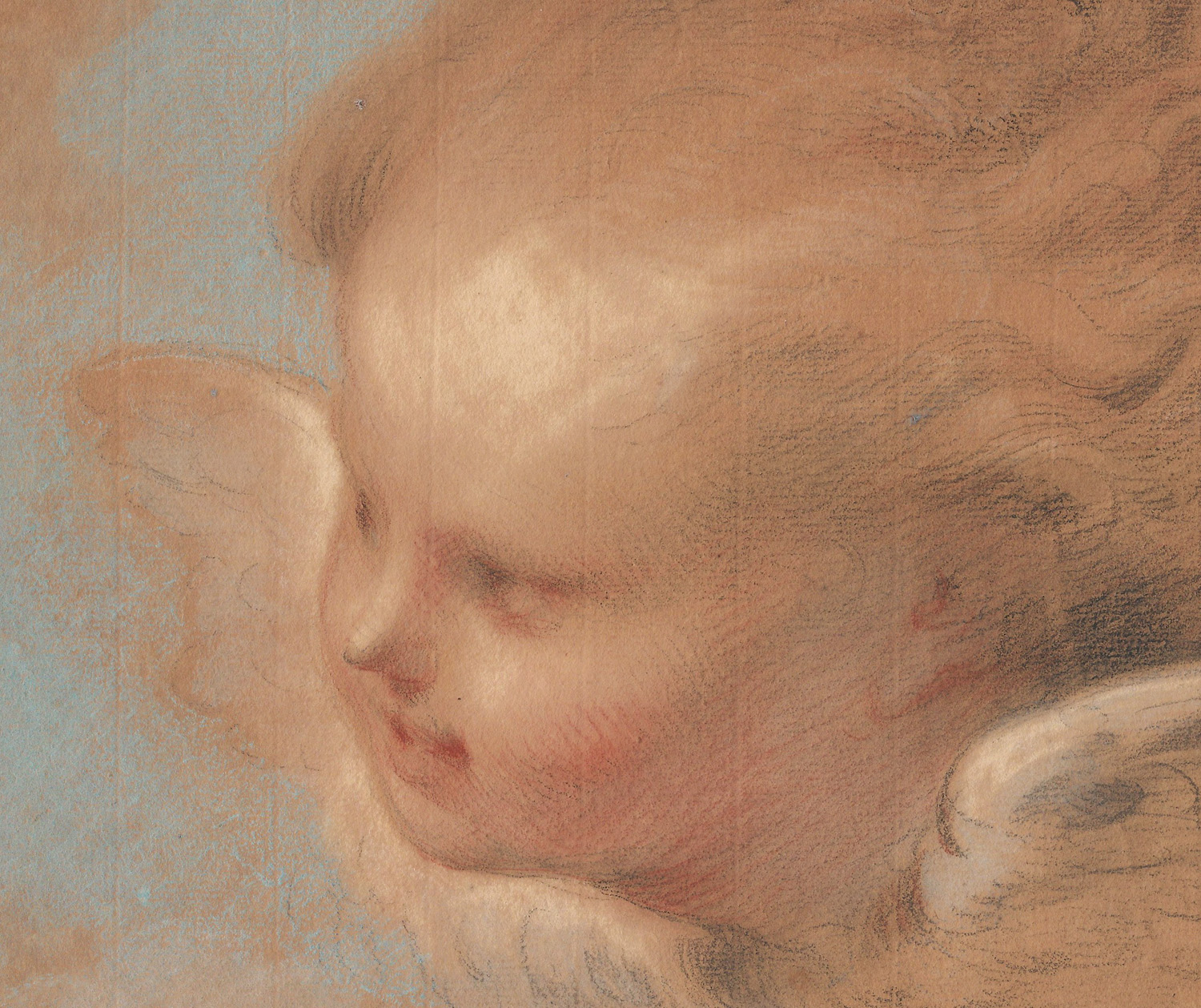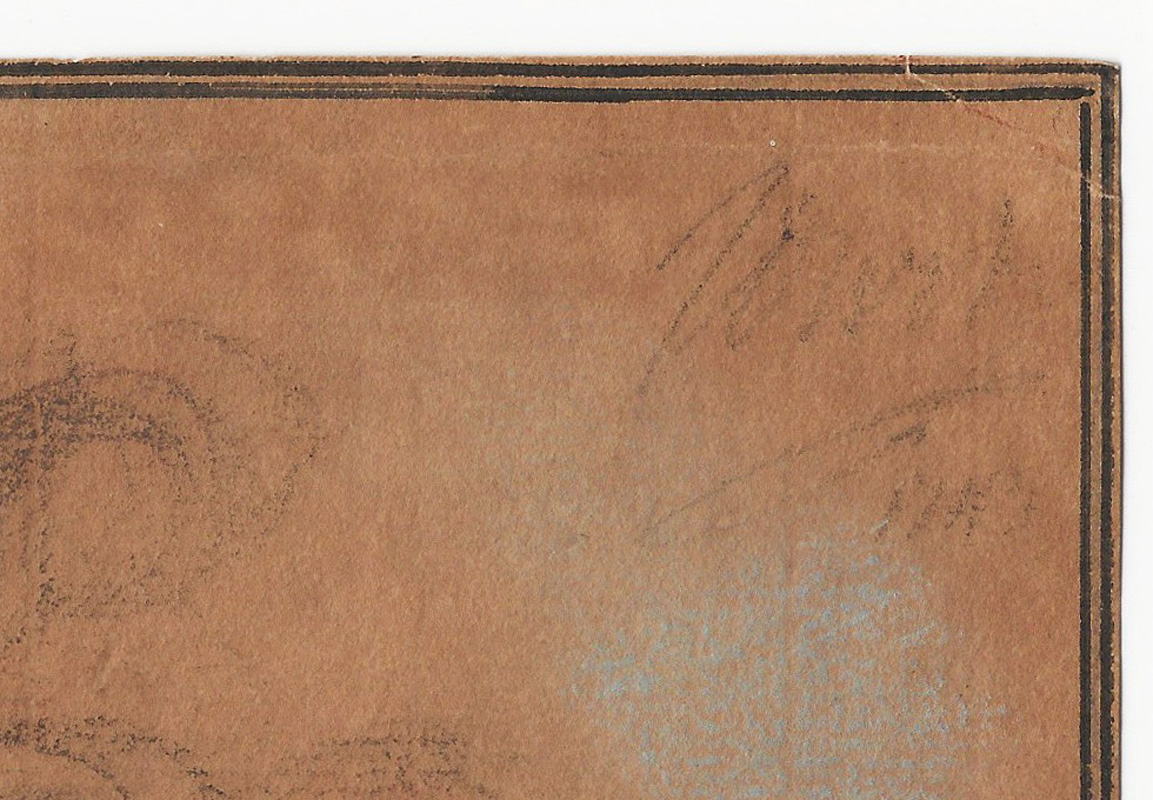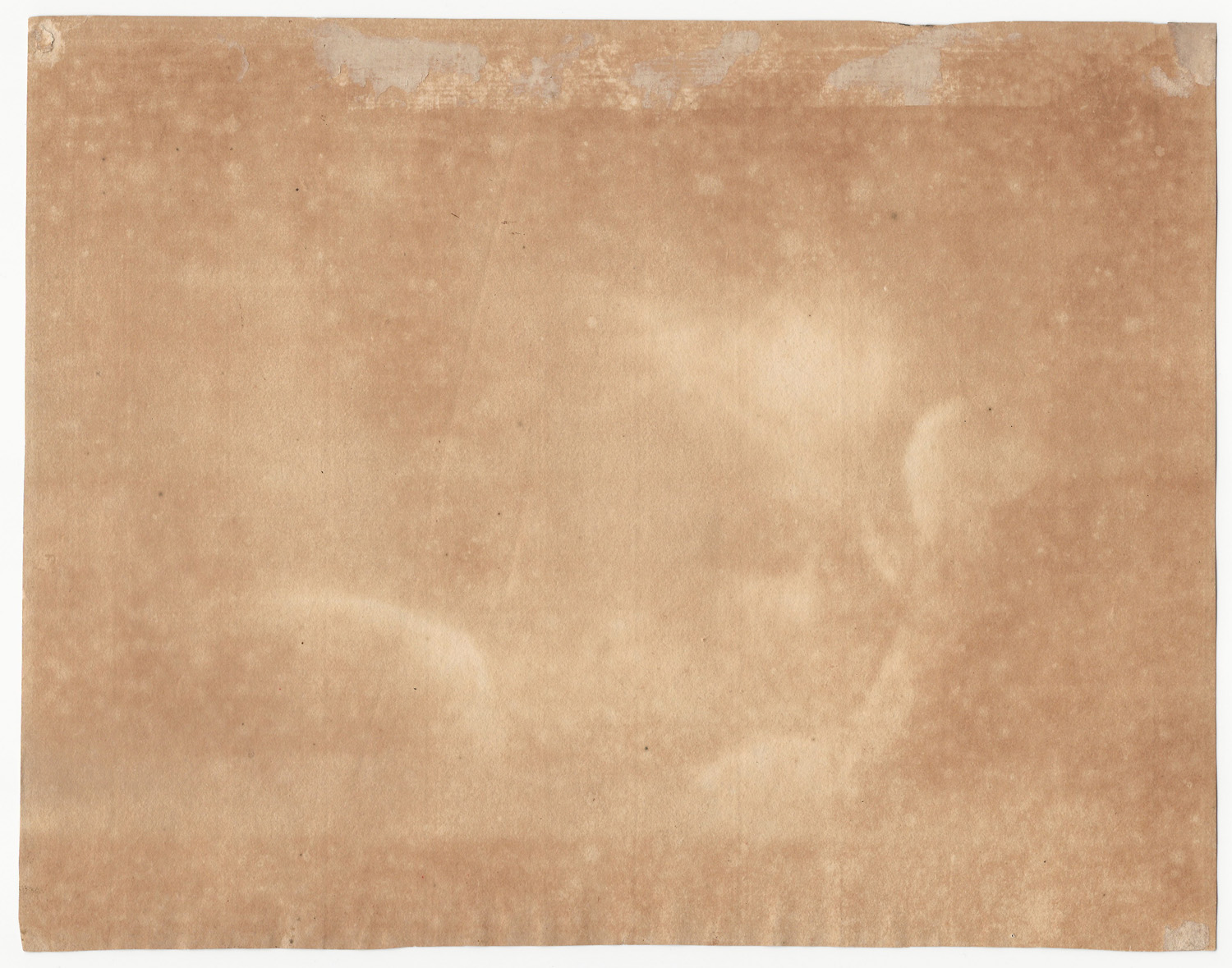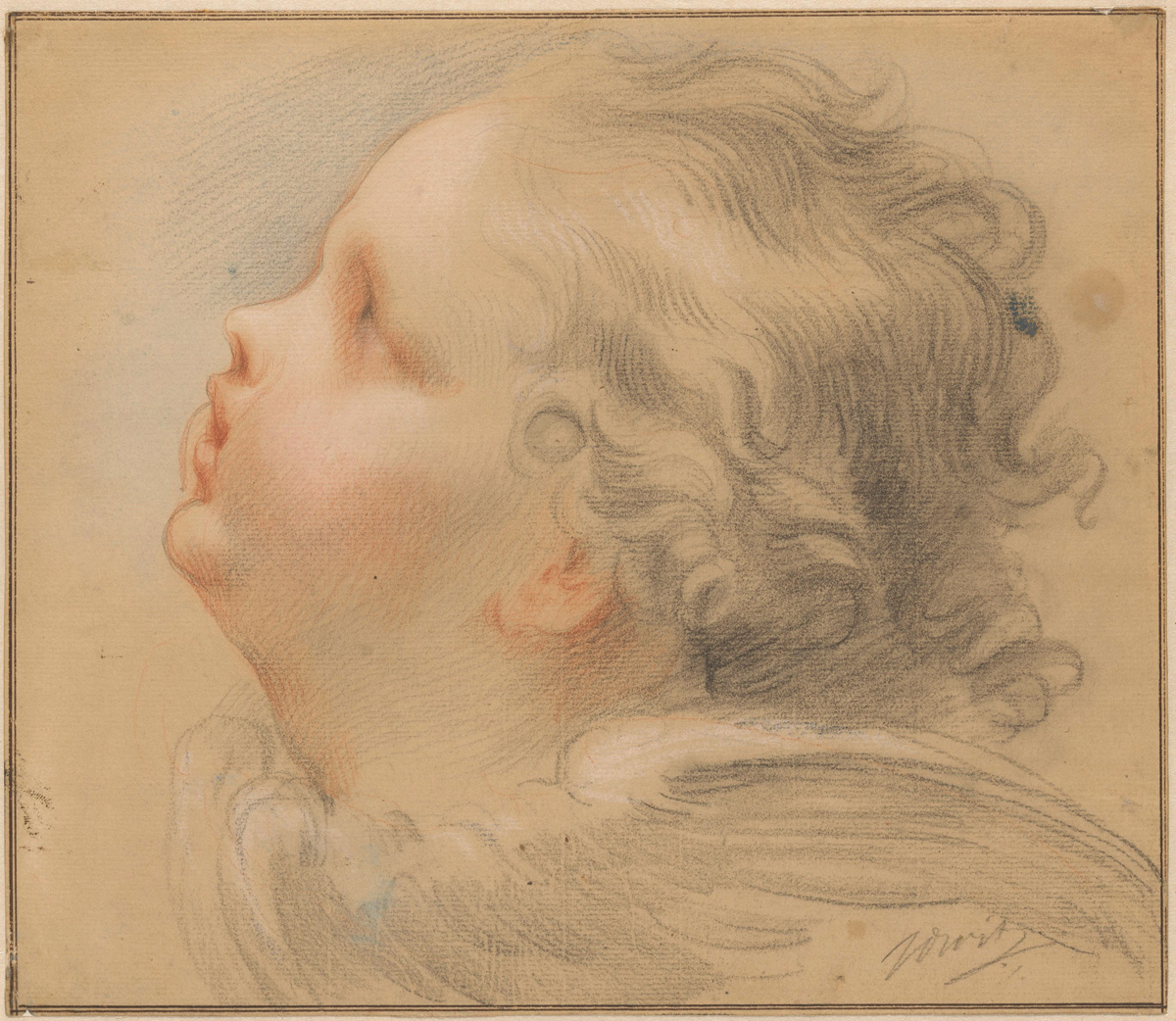JACOB DE WIT (Amsterdam 1695 – 1754 Amsterdam)
Jacob de Wit (Amsterdam 1695 – 1754 Amsterdam)
A Head of a Putto
Black, white, blue and red chalk, grey wash, black ink framing lines, on yellowish paper, partial watermark crowned shield with French lily, 243 x 313 mm (9.6 x 12.3 inch)
Signed and dated ‘JdeWit / 1743 [or possibly 1745]’ (black chalk, top right)
Provenance
Private collection, The Netherlands
***
Jacob de Wit was born in Amsterdam and received his early training when he was only nine years old from the painter Albert Spiers.1 At the age of thirteen he left for Antwerp to study with Jacob van Hall and became an admirer of Rubens and Van Dyck. De Wit quickly developed into the leading decorative painter in Amsterdam. From 1717 on De Wit had so much work on his hands ‘that he scarcely knew were to begin’, according to the artist’s biographer Jacob van Gool in 1750.
One of De Wit’s specialities were grisaille paintings, giving the illusion of marble reliefs. These grisailles are knowns as ‘Witjes’, after the artist to whom they had brought such fame. Many of the houses along the Herengracht and Keizersgracht canals of Amsterdam are still adorned with ceiling paintings and wall panels by De Wit. Together with Cornelis Troost, De Wit is rightly considered among the most important and gifted artists of the Dutch 18th century, the Silver Age.
Several related drawings of putti or cherubs are known by De Wit, all in similar technique of coloured chalks, and of similar generous dimensions. The double ink framing lines are also typical for De Wit. Our drawing can for instance be compared to a sheet in the Rijksprentenkabinet of the Rijksmuseum, Amsterdam (fig.).2 Other examples are in the Museum Boijmans Van Beuningen in Rotterdam and the Teyler Museum in Haarlem.3 Although they may have served as preparatory drawings for paintings and altarpieces, they must also have been intended for contemporary collectors, as they are frequently signed and dated by De Wit.
The present beautifully preserved drawing illustrates perfectly why De Wit was so highly favoured – the virtuoso handling of the sheet is almost un-Dutch in flavour and can be compared to contemporary Venetian draughtsmen, notably Tiepolo.
SOLD
1. For the artist, see: A. Staring, Jacob de Wit: 1695–1754, Amsterdam 1958, J. Huisken, Jacob de Wit: de Amsteltitiaan, Amsterdam 1986 and G. van den Hout and R. Schillemans, Putti en Cherubijntjes: het religieuze werk van Jacob de Wit (1695–1754), Haarlem/Amsterdam 1995-96.
2. Coloured chalks on light brown paper, 233 x 268 mm, inv. no. RP-T-1888-A-1555.
3. See Van den Hout and Schillemans, op. cit., fig. 1 on p. 6 and fig. 2 on p. 9.
